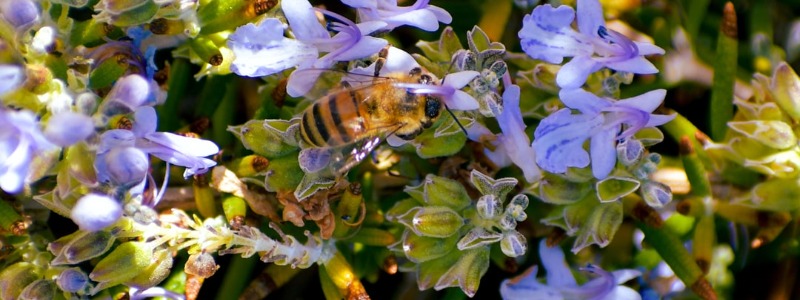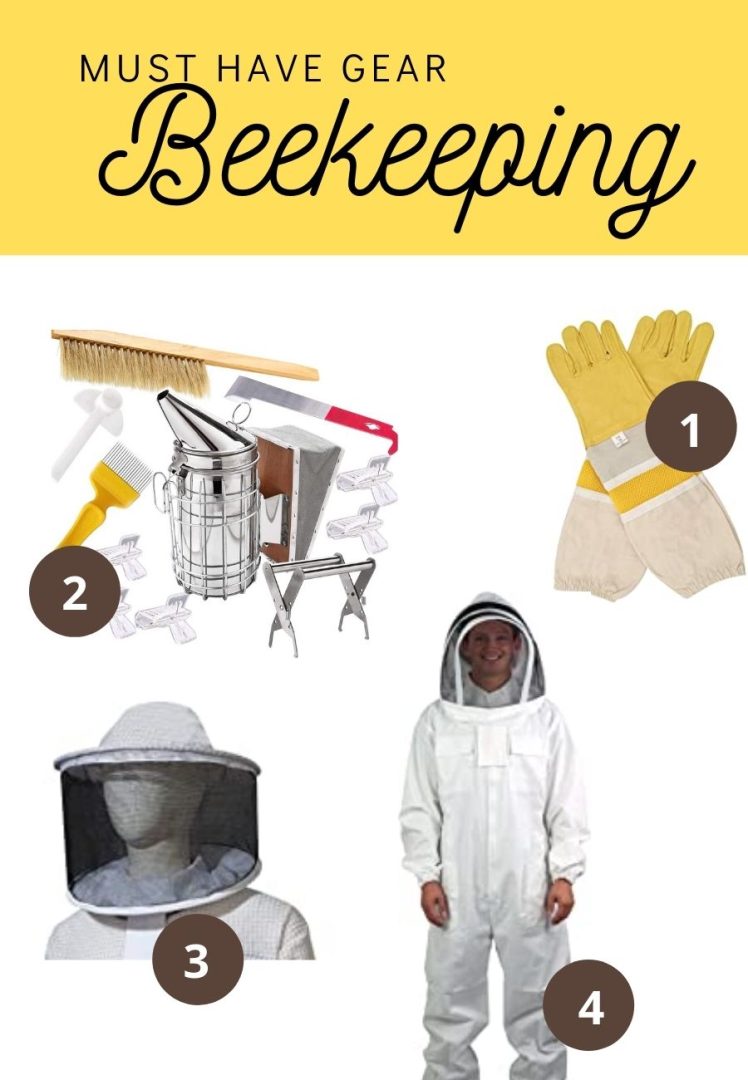Here are some facts about bees: they play a vital role in our ecosystem and economy, as one of the most important crop pollinators on the planet; they are facing danger due to climate change, widespread pesticide use, and the effects of habitat destruction; they aren’t the ones stinging you (usually). Bees are our pals. Here are some small things you can do to make a huge impact.
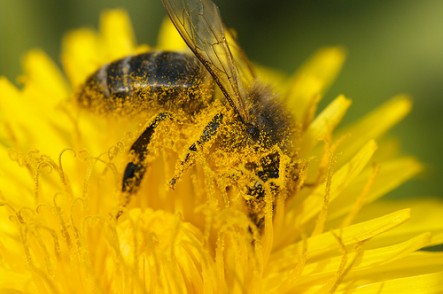
The bad news is that our honey bees are dying. U.S. beekeepers lost a shocking 31% of their hives this winter, as they have for the past seven years in a row. Although the exact causes of Colony Collapse Disorder are not 100% certain, what is crystal clear is that we’re speeding towards the disastrous point at which we will not have enough bees to pollinate our crops.
The good news is that there are a number of easy (even enjoyable) ways YOU can help honey bees to survive and, hopefully, to thrive. And none of them involve rushing out to buy protective mesh clothing and a smoke can!
Plant bee-friendly flowers
This not only helps the honey bees, but it will also make your yard more beautiful and can also provide you with a bunch of great culinary herbs.
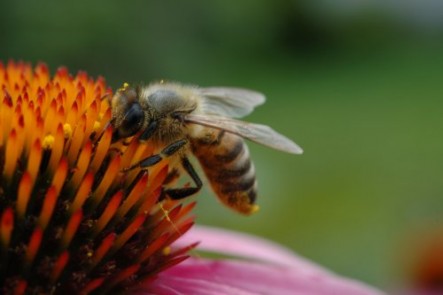
It doesn’t take a lot of effort, know-how, or money to get started on a small bee-friendly garden. “Garden”, in this sense, can really be a collection of potted plants or a very small front yard edible garden. All you need to get started are a few of the right type of plants (for attracting bees, go with single-petal blue, yellow, or purple flowers, and native species) and a small bee bath – a flatwater source filled with stones or pebbles so the bees have a place to land. Make sure you forgo pesticide use in your garden. Even if it’s a small amount, it can still have devastating effects on your local bee population.
In addition to the dandelions and clover I mentioned above, bees love many other flowers, including bee balm, borage, asters, lavender, thyme, mint, rosemary, honeysuckle, poppies, sunflowers, marigolds, salvia, butterfly bush, clematis, echinacea (see the bee partaking of some coneflower goodness below) blackberries, raspberries, strawberries, fennel, yellow hyssop, milkweed, goldenrod, and many more.
You can also just buy one of those pre-mixed packets of wildflowers with good results. And, if you’re ever in doubt, choose native plants as they will be best suited to the climate you live in and can help support the bees throughout the season.
Let your yard get a little unkempt
If you can handle a non-perfectly manicured lawn, you can help local bees. Let clover and dandelions grow in your yard, as they are among bees’ favorite plants. It couldn’t be any easier. All you have to do to let dandelions grow is to not kill them!
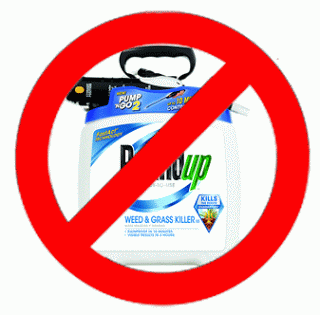
Apart from that, you can leave some sticks, twigs, and other brush lying around one corner of your backyard. Not all bees live in hives and many build/burrow into nests at ground level. Providing habitat for bees is just as important as providing them with pollen sources.
Buy local honey
Bees are going to produce honey whether you eat it or not. Eating honey does not harm bees. You can, however, help bees by being choosy when it comes to what honey you buy. Local honey is produced by smaller, local beekeepers who are, on the whole, more concerned with the health of their bee population than with massive profits. It may cost you a little more, but it’s well worth it. It may even provide some extra health benefits.
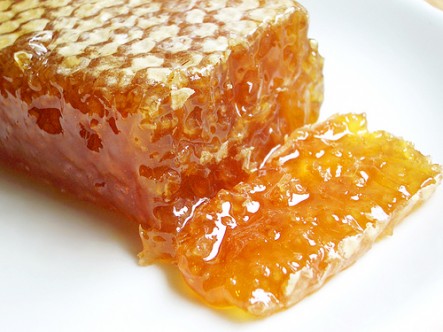
This is a pretty sweet way to help the bees (sorry, I can never resist a good pun.) Unlike big honey companies, local beekeepers tend to be much more concerned about the health of their bees than they are about their profits. And their products do not have to travel far to reach your kitchen, either. You can almost always find local honey at your farmers’ market and it may also be available at your local health food or grocery store. It may cost a little more than the commercial options, but it’s well worth it.
These are of the things you will need when attending to your bees.
1. Beekeeping Gloves
Check on Amazon Pricing: Beekeeping Gloves
Beekeeping gloves that of Premium quality that are made from Goatskin Leather. Best to have them be long heavy. These here are the best heavy duty canvas sleeves and come with elastic cuffs and very durable to ensure a longer-lasting life span. These are an altimate must have for any bee keeper.
2. Beekeeping Tools
Check out Amazon Pricing: Kit -10 Pcs-Beehive Smoker, Beekeeping Accessory -Bee Keeping Tool
These are really the only beekeeping tools you will need to maintain their hive. Untill they start producing enough honey to harvest. These tools are great if your on a budget, this is a great way to begin! This fully assembled kit. It will include the basic beehive smoker, Horse hair tail brush with very Soft Bristles, a Plastic bent handle Scratcher fork, Steelnees Frame Gripper, Entrance Feeder Water Dispenser, Queen bee clip. Once your colony is established, you will need to ad a top brood chamber and then honey supers.
3. Beekeeper Round Veil
Check out Amazon Pricing: Beekeeper veil
Beekeeping hat and veil is equipped with a light veil. The veil is separate from the suit. Stay cation that bees do not crawl under the veil. This veil gives you more ability to move your head freely and gives you large range of movement. The thick denim fabric has good support and is not easy to collapse and deform.
4. Full Body Beekeeping Suite
Check out Amazon Pricing: Beekeeper Suite
Self Supporting that has a hat or top hood with a Collapsible Veil that is Heavy Duty. The Zippers provide ample protection for beekeeping. If you are a beginner this suit will add a bit of security and protection from the bees. This suit is made from a comfortable, lightweight, protective fabric.
Buy organic
Once again, this is something that’s easy if you don’t mind spending a little extra cash. Organic products are grown without pesticides, herbicides, and other chemicals that can harm bee populations. By supporting organic growers, you’re giving your money to people who are doing their small part to help protect the bees. If you can buy organic AND local (think farmers markets), then it’s a bonus.
Pick up your pen and/or wallet
Saving the bees is a global issue that you can affect on a local level, but big, sweeping change must also come from those in power. By picking up your pen and writing your congresspeople you can let them know that honeybee research and funding is an important issue to you (and you vote!). By picking up your wallet and donating to one of the many organizations working to protect bee populations, you can make sure their work continues.
If you are concerned about the bees but don’t think that you can do anything to help, you’re wrong. Even taking these five small steps can make an impact. If the bee population is hurting, so are we. Our food production greatly depends on these buzzy little pollinators.

